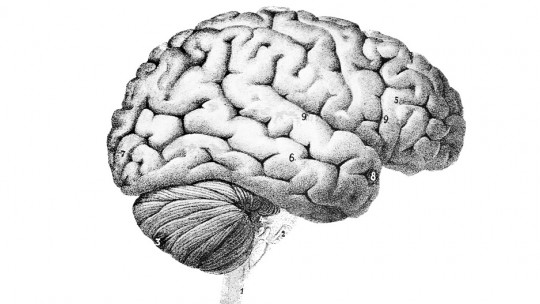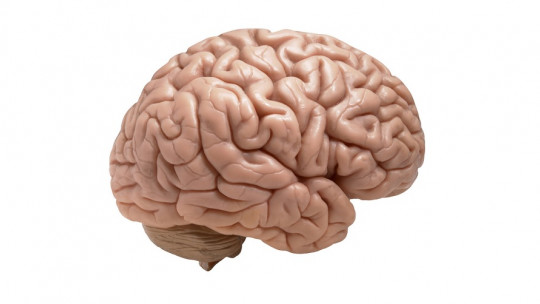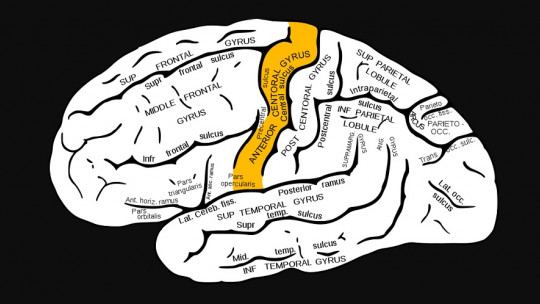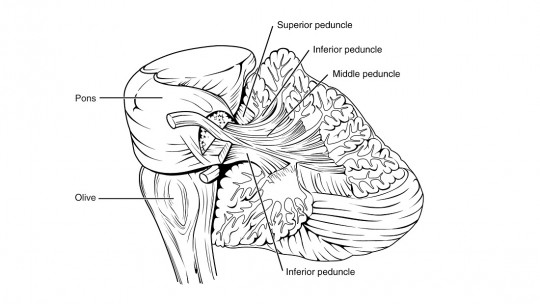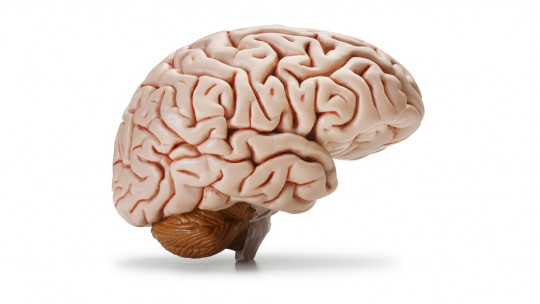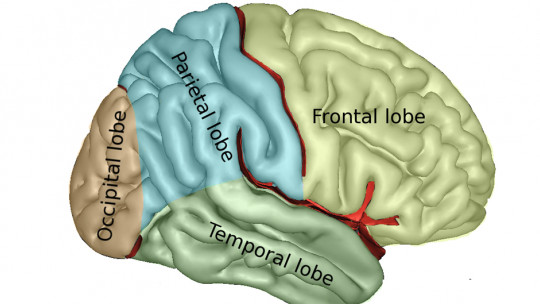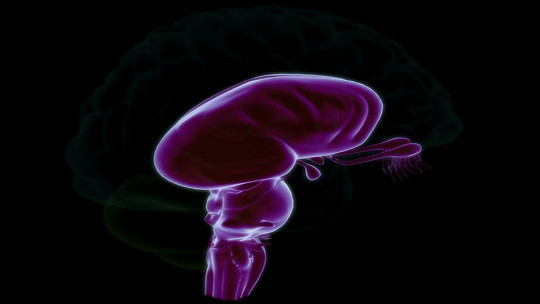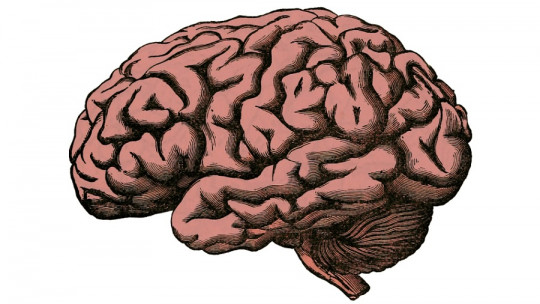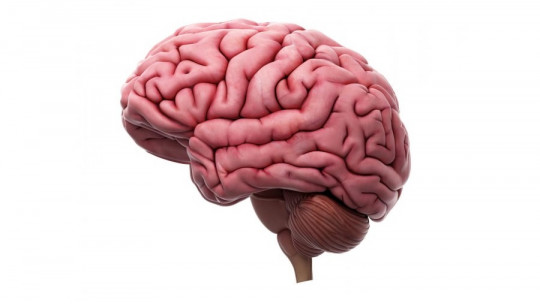
When we talk about the brain, one of the most typical comparisons made is that it resembles the shape of a walnut, given that it has a wrinkled shape.
These characteristic wrinkles of the organ are due to the fact that its surface is folded on itself, allowing it to fit better. However, apart from this, What are the folds of the brain for? Do they have something to do with intelligence? Let’s see it below.
What are the folds of the cerebral cortex for?
The main reason why the human brain is wrinkled is because folding in on itself allows it to gain some space. The brain folds are what are more appropriately called gyri, while the sulci or fissures are the depressions between these wrinkles The human brain is so wrinkled that, if we could spread it out on a table, we would have about 2,500 square centimeters, the size of a small tablecloth.
According to Lisa Ronan, a researcher at the University of Cambridge, the cortex of the human brain, the outermost surface of the brain, expands during fetal development. Contrary to what many believe, the brain has a consistency similar to that of gelatin.
Being such a soft organ, this makes it a tremendously vulnerable part of the body when pressure is exerted on it. For prevent the cerebral cortex from colliding with the walls of the skull during brain growth during pregnancy it folds on itself, gaining a little space.
This space-gaining strategy is not something exclusive to the human species. It can also be seen in other mammal species, such as dolphins, elephants and whales. It is for this reason that scientists have defined the concept of gyrification, which refers to how folded in on itself the cerebral cortex is in a certain species.
Traditionally, gyrification has been viewed as the result of a high degree of neurogenesis and dendrite growth. In our species, as can be deduced by looking at a photograph of the brain, we have a fairly high gyrification index and, for this reason, having more folds has been associated with having higher cognitive abilities, as occurs in humans. .
However, after analyzing other mammalian brains, something certainly paradoxical has been seen. Although human beings are the animal species with the greatest intelligence, There are other animals that have brains with a greater number of turns The most notable cases are the brains of elephants, whales and dolphins.
Other functions of the gyri and sulci
As we have already seen, these folds, called cerebral gyri and sulci, have the main function of allowing more space to be available and preventing the cerebral cortex from being pressed towards the cranial walls. This allows more neurons to accumulate in the cortex and, for this reason, it has been believed that a greater number of folds was synonymous with a greater capacity to process information.
In turn, these folds are used by neuroanatomists as criteria to divide the brain into regions, functioning like the borders on a cartographic map. In this way, and thanks to these wrinkles, the human cortex is divided into two hemispheres that, in turn, are divided into four lobes: frontal lobe, temporal lobe, parietal lobe and occipital lobe.
Although the idea that the brain wrinkles more to allow more neurons to be packed makes sense and is physically possible, which would, in turn, give meaning to the theory that the more wrinkles, the greater the cognitive capacity, another explanation has also been attempted. for this. It has been seen that The larger the animal, the more likely it is to have a brain with many folds The larger the brain is during pregnancy, the more it needs to fold in on itself.
This would explain why there are very small animals, such as rats and mice, that have a smooth cerebral cortex. dDuring fetal development, your brain does not grow enough to need to fold in on itself to save space On the other hand, this would also resolve the question of why elephants and whales have more wrinkled brains than ours. Being larger, their brains need to wrinkle more while they are forming in the womb.
However, and although this explanation is quite convincing, there are cases of animals that have smoother brains than they should considering their size, as is the case of manatees. It is for this reason that another explanation was proposed, halfway between the traditional one that more roughness is equivalent to greater cognitive capacity and the theory of the relationship with brain size. The key would be in the physical properties of certain parts of the crust
There are brain regions that are thinner than others, which would make them tend to bend more easily. Depending on how they were folded in certain areas, not only could their physical properties be elucidated, but it could also be related to the specific function they can perform.
It has also been suggested that, depending on the type of behavior exhibited by the animal species, its brain will present a greater or lesser amount of wrinkles. It has been seen that some mammals with few brain wrinkles tend to form and live in small social groups while animals with more folds would have more extensive social network behaviors, something that humans, whales and dolphins share.
The case of the brain without folds
Some time ago an image of a brain, supposedly human, that lacked wrinkles appeared on the Internet. This brain was far removed from the traditional comparison of it being a nut. More than a nut, this particular brain was reminiscent of a fish, a blob fish specifically.
This brain was found by photographer Adam Voorhes, who was doing a photo shoot in the brain sample racks at the University of Texas. What is known about this group of brains, in which the smooth brain is found, is that they belonged to patients at the Mental Hospital in the city of Austin, in the state of Texas. These brains had been left in the darkness of oblivion for 20 years, in a closet in the university’s animal laboratory.
There has been an attempt to find out who was the person who housed such a curious and, at the same time, chilling brain in his skull. How did she behave? Was she able to speak? Did she have a properly human conscience? The only thing that can be known based on his brain is that the subject suffered from a serious case of lissencephaly, that is, a brain with fewer convolutions than it should, although in his case the lack of wrinkles was total.
Typically, cases of lissencephaly are due to errors in neuronal migration during fetal development It is believed that it could be caused by the action of certain pathogens, especially viruses, which would occur during the first trimester of pregnancy. It has also been theorized that it could be caused by a lack of blood flow while the fetus is forming, although the idea that it is a rare genetic disorder has some strength.
Among the symptoms suffered by people with this strange disease are having an unusual facial appearance, swallowing problems, severe psychomotor retardation, abnormalities in the hands and feet, spasms and seizures. The treatment is symptomatic, and can only improve, as far as humanly possible, the well-being of the affected person, although their life expectancy is no more than two years.

